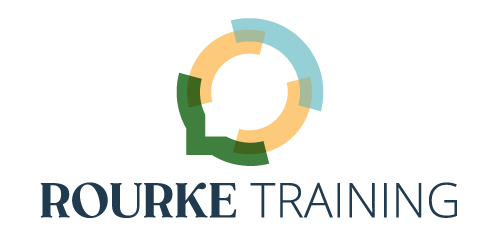More than two years into the global COVID-19 pandemic, it is past time for C-suite and senior executives to look the “new normal” in the eye. Or, more accurately, to look directly at the camera when presenting or speaking online. Virtual presence matters now more than it ever has.
In the spring and summer of 2020, most people were extended grace when they gave presentations that were awkward, ineffective, or both. No one was critiquing unengaging virtual presence while everyone was scrambling just to survive. Many in this uncomfortable new position latched on to a few tools or tricks that worked for them and settled into practices that got the job done, barely. We have become used to seeing speakers’ side profiles as they look at notes on a second screen. We have learned that “death by PowerPoint” happens faster and is more painful when online. We have accepted disengaged audiences as the necessary price of virtual meetings.
But your virtual presence, how you interact and engage while presenting and speaking online, DOES NOT have to be this way. Whether companies return to in-person offices, remain fully remote, or retain a hybrid model, work will still include virtual spaces for the foreseeable future. Executives need to take the time – now – to adapt their processes so that the “new normal” isn’t painful anymore.
Kirsten Rourke, CEO of Rourke Training, spoke with top leaders in companies across several sectors and on both sides of the Atlantic to better understand the costs – and the opportunities – of this moment of reckoning for online presenting and speaking. From media communications and law in England to financial technology, online data management, and consolidated utilities in the United States, these executives all underscored that an effective virtual presence is critical for their businesses’ success.
The problem
Like many in companies around the world, several of Kirsten’s interviewees had to figure out online presenting abruptly and without proper training.
Becky Stormer, Client Business Director at Manning Gottlieb OMD, said, “I think we were thrust into it and everyone sort of, has tried to make the most of it.” Gina Callender, who teaches yoga in addition to being the Head of Learning and Development, Diversity, Equity & Inclusion at Ford Pro, turned to YouTube. She took a class on teaching yoga online, then transferred those skills to her office.
Mark Davison had the unfortunate timing to start in the arbitration division of Mills and Reeve, LLP on the day that Boris Johnson ordered British offices to close in March 2020. Not only was he working entirely online for the first time, but he was leading a team who had never worked with him before. Engagement and team-building were paramount and urgent.
The pandemic magnified what fully-online industries already knew: online communication skills are both essential and learned.
What’s more, the pandemic multiplied everyone’s screen time by orders of magnitude. Erin Fusaro, Vice President of Engineering at Chipper Cash, said that global, fully online companies have to deal with the fact that “there isn’t an easy way of inspiring people, getting interest, and catching people’s attention” in an environment that’s “often in competition with everything else that’s trying to communicate with us at the same time.”
Chris Condron, CTO at Event Store, highlighted the importance of communicating your vision clearly to your team as well as to a wide range of internal and external stakeholders. He notes, “It’s about the ideas. How do you come across clearly and concisely to share an idea? That’s critical in business.”
Cutting through the digital noise became the top priority for these excutives so their teams could operate effectively.
Finding solutions
All of these executives identified experimentation and practice as the keys to better online presenting and speaking. Davison adopted a “give it a go” strategy in his division’s online seminar series and gave junior colleagues ways to gain experience in low-stakes opportunities like summarizing a case during a weekly meeting. Callender talked about the need to rotate who speaks “so that people who don’t have experience get the opportunity” to develop these skills. Condron finds that intentional choices create good online speaking skills.
Making your point in a way that fully engages your audience is the key. Stormer was most frustrated by online presentations where the speaker talked AT her, not TO her and ignored what their audience needed to take away. Fusaro says that effective online communicators need to be good storytellers.
There’s no “one size fits all” solution for effective virtual presence. Everyone needs a set of skills that they continually develop and extend to suit their own needs as well as those of their audience.
The business case for better virtual presence skills
Being an effective online presenter and speaker is no longer a nice-to-have skill, nor should training be reserved only for the uppermost level of a company.
Senior and C-suite executives must lead by example, including being transparent about the value of improving their own virtual presence skills. If leadership has a double standard of poor online public speaking performance for executives while most employees are expected to shine, few will be particularly motivated to take advantage of professional development budgets — if there even are any funds for this kind of skills training.
Take the opportunity to adopt and adapt best practices to suit each company’s culture. Provide ongoing training and follow-up with low-stakes opportunities to practice. Remove technological barriers to hybrid environments as part of your strategic plan for future growth in your business sector, employee recruitment and retention, and reduced environmental impact.
Two years is more than enough time to discover what’s working for you in online presenting and speaking, and what isn’t. Virtual work spaces are here to stay, so invest in these skills now to enhance your company’s readiness for the new-normal workplace.
What’s working for you?
Whether you’re the head of a company or a team member, how have you leaned into developing virtual presence and hybrid work arrangements? Tell us what’s working for you in the comments.
Check Out Our YouTube Channel
The Rourke Training – Ongoing Mastery YouTube channel has a bit of something for everyone. Go there to get Kirsten’s take on examples of public speaking, as well as reflections on her entrepreneurial journey. The channel is also the home of the podcast Kirsten and Kellie produced for 5 years, Ongoing Mastery: Presenting & Speaking, which covers everything connected to continually improving your craft of being a public speaker, from interviews and mini-coaching sessions with guests to conversations between Kirsten and Kellie.
Come join us.


